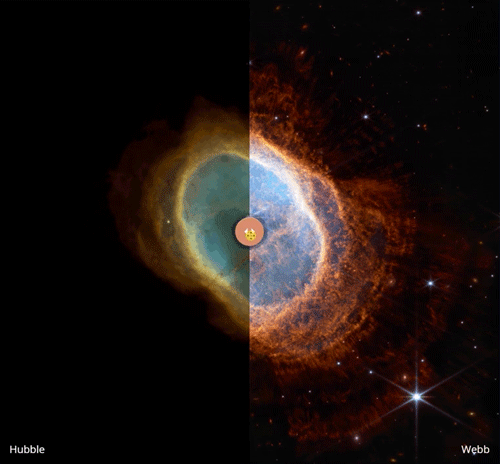Solar System 10 Things: Looking Back At Pluto
Solar System 10 Things: Looking Back at Pluto
In July 2015, we saw Pluto up close for the first time and—after three years of intense study—the surprises keep coming. “It’s clear,” says Jeffery Moore, New Horizons’ geology team lead, “Pluto is one of the most amazing and complex objects in our solar system.”
1. An Improving View

These are combined observations of Pluto over the course of several decades. The first frame is a digital zoom-in on Pluto as it appeared upon its discovery by Clyde Tombaugh in 1930. More frames show of Pluto as seen by the Hubble Space Telescope. The final sequence zooms in to a close-up frame of Pluto taken by our New Horizons spacecraft on July 14, 2015.
2. The Heart

Pluto’s surface sports a remarkable range of subtle colors are enhanced in this view to a rainbow of pale blues, yellows, oranges, and deep reds. Many landforms have their own distinct colors, telling a complex geological and climatological story that scientists have only just begun to decode. The image resolves details and colors on scales as small as 0.8 miles (1.3 kilometers). Zoom in on the full resolution image on a larger screen to fully appreciate the complexity of Pluto’s surface features.
3. The Smiles

July 14, 2015: New Horizons team members Cristina Dalle Ore, Alissa Earle and Rick Binzel react to seeing the spacecraft’s last and sharpest image of Pluto before closest approach.
4. Majestic Mountains

Just 15 minutes after its closest approach to Pluto, the New Horizons spacecraft captured this near-sunset view of the rugged, icy mountains and flat ice plains extending to Pluto’s horizon. The backlighting highlights more than a dozen layers of haze in Pluto’s tenuous atmosphere. The image was taken from a distance of 11,000 miles (18,000 kilometers) to Pluto; the scene is 780 miles (1,250 kilometers) wide.
5. Icy Dunes

Found near the mountains that encircle Pluto’s Sputnik Planitia plain, newly discovered ridges appear to have formed out of particles of methane ice as small as grains of sand, arranged into dunes by wind from the nearby mountains.
6. Glacial Plains

The vast nitrogen ice plains of Pluto’s Sputnik Planitia – the western half of Pluto’s “heart”—continue to give up secrets. Scientists processed images of Sputnik Planitia to bring out intricate, never-before-seen patterns in the surface textures of these glacial plains.
7. Colorful and Violent Charon

High resolution images of Pluto’s largest moon, Charon, show a surprisingly complex and violent history. Scientists expected Charon to be a monotonous, crater-battered world; instead, they found a landscape covered with mountains, canyons, landslides, surface-color variations and more.
8. Ice Volcanoes

One of two potential cryovolcanoes spotted on the surface of Pluto by the New Horizons spacecraft. This feature, known as Wright Mons, was informally named by the New Horizons team in honor of the Wright brothers. At about 90 miles (150 kilometers) across and 2.5 miles (4 kilometers) high, this feature is enormous. If it is in fact an ice volcano, as suspected, it would be the largest such feature discovered in the outer solar system.
9. Blue Rays

Pluto’s receding crescent as seen by New Horizons at a distance of 120,000 miles (200,000 kilometers). Scientists believe the spectacular blue haze is a photochemical smog resulting from the action of sunlight on methane and other molecules in Pluto’s atmosphere. These hydrocarbons accumulate into small haze particles, which scatter blue sunlight—the same process that can make haze appear bluish on Earth.
10. Encore

On Jan. 1, 2019, New Horizons will fly past a small Kuiper Belt Object named MU69 (nicknamed Ultima Thule)—a billion miles (1.5 billion kilometers) beyond Pluto and more than four billion miles (6.5 billion kilometers) from Earth. It will be the most distant encounter of an object in history—so far—and the second time New Horizons has revealed never-before-seen landscapes.
Make sure to follow us on Tumblr for your regular dose of space: http://nasa.tumblr.com.
More Posts from Night-hides-the-world and Others

“The shockwave from a 20,000 year-old supernova explosion in the constellation of Cygnus is still expanding into interstellar space. The collision of this fast moving wall of gas with a stationary cloud has heated it causing it to glow in visible as well as high energy radiation, producing the nebula known as the Cygnus Loop (NGC 6960/95). The nebula is located a mere 1,400 light-years away. The colors used here indicate emission from different kinds of atoms excited by the shock: oxygen-blue, sulfur-red, and hydrogen-green. This picture was taken with the Wide Field and Planetary Camera 2 on board the Hubble Space Telescope.”
Photo by J Hester of ASU, description via NASA.

NGC 1999
Just south of the Orion nebula is a dense area of dust and gas forming stars, in fact, the first Herbig-Haro stars were located here, protostars pushing intense beams of matter out at the poles.
The mystery is the black blob in the white region, a reflective nebula from the star V380 Ori, but what is the dark patch ?

Originally it was thought to be a dense dark cloud of dust, hiding the light, however further analysis has found it is indeed a hole, made to look black in contrast to the bright reflective surroundings.
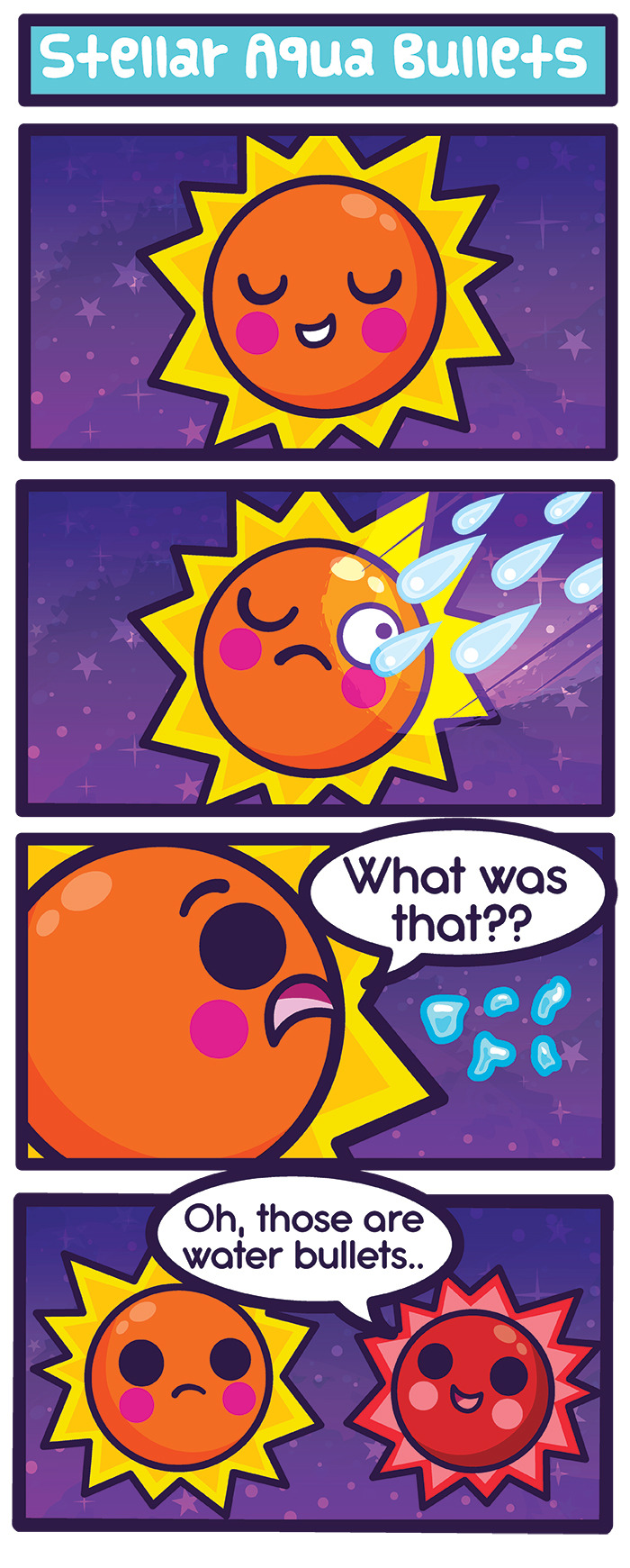
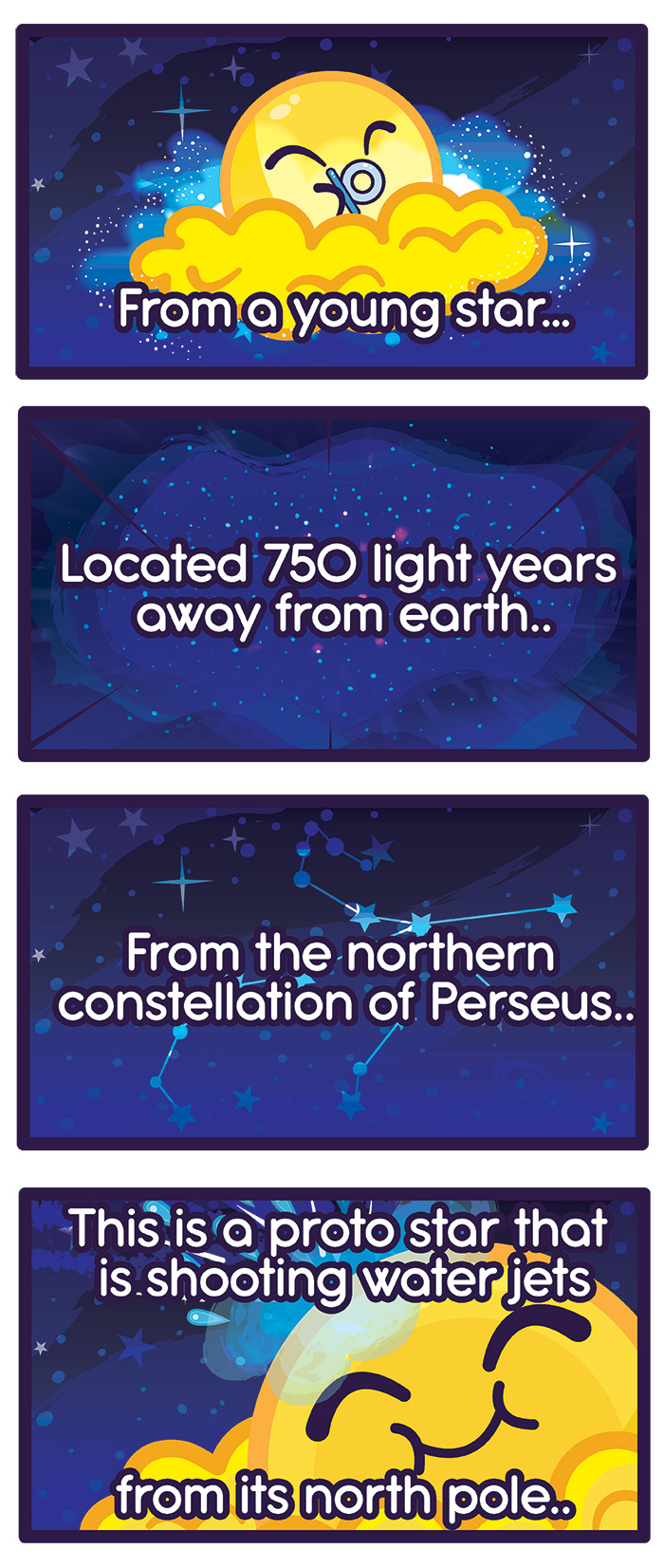

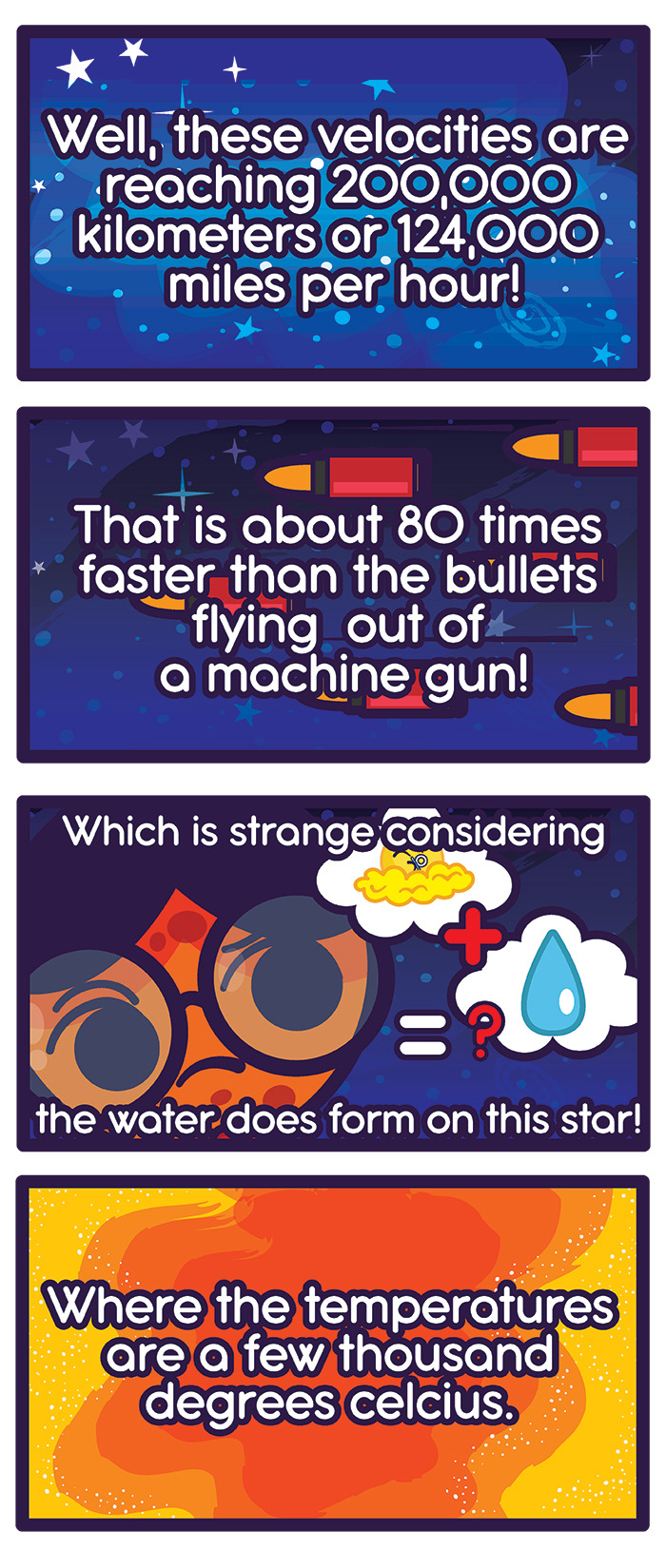
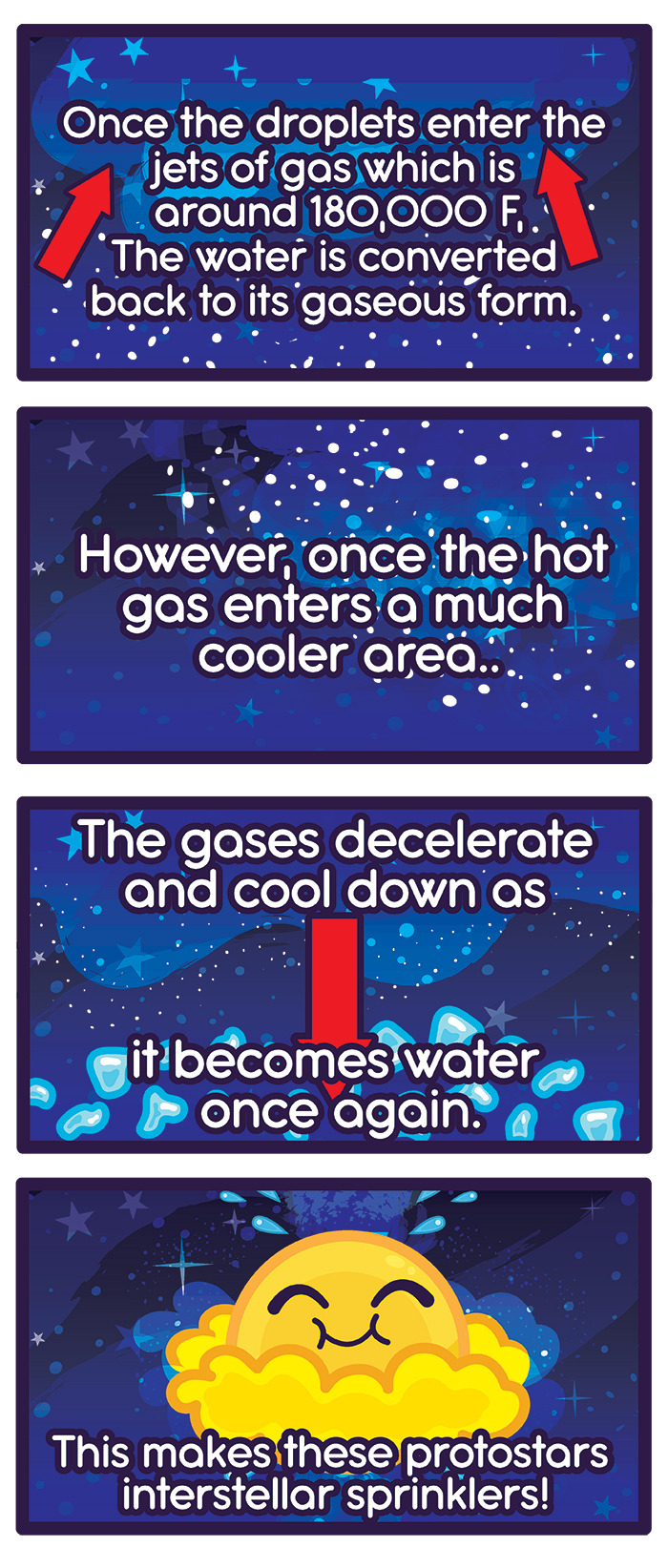

Better late than never!
Here’s a comic about a star that erupts water bullets! OoO!
https://news.nationalgeographic.com/news/2011/06/110613-space-science-star-water-bullets-kristensen/
https://www.huffpost.com/entry/star-shooting-water-jets-herschel_n_879211
https://www.popsci.com/technology/article/2011-06/herschel-spots-young-star-spewing-water-jets-interstellar-space?cmpid=tw
https://www.digitaltrends.com/web/young-stars-shoot-epic-quantities-of-water-into-space-study-shows/
Seriously done with life..

Once again, I got rejected from a job the moment i came into an in person interview which is strange since the person was desperate to see me only to cut the inteview short upon noticing I am not what she thought i was (I’m brown skinned.)
This has been happening to me for almost 2 years and despite my 10+ years graphic design experience, I guess it’s not enough, i get the fake smile, the awkqard atmosphere and then “Well…we were really looking for someone who is self motivated and creative….” Even though they already saw my portfolio and resume and just had to see me as I would always be the first one to be interviewed. Afterwards I would get the “Well…we’re still interviewing and …we’ll be in touch” Nonsense. ::sigh::
I guess i’m giving up all together…i’ve applied to over 2000+ job applicaitons and I either get job rejections automatically or situations like this when I actually get my foot in the door for an in person inteview.
Perhaps I wasn’t meant to work for anyone and maybe this is God telling me to focus on Cosmic Funnies as my job.
Whichever it is, I am tired and wanting to give up on life. I work so hard and I feel like i’m getting nowhere.
If you wish for me to make Cosmic Funnies my job, please support me on my Ko-fi so I can actually have food to eat:
https://ko-fi.com/cosmicfunnies
I have a patreon as well: https://www.patreon.com/cosmicfunnies
I have two sales going on my cosmic funnies site
https://www.cosmicfunnies.com/starry-shop
Use code STARRYSCHOOL30 (sale ends september 20th)
Check out my latest planner:
They’re on the book shop in both soft and hard cover, 6x9 and 8x10 and it will come with starry emojis deluxe 2 sticker set so you’re getting a nice bundle for one price.
https://www.cosmicfunnies.com/book-shop/cosmic-funnies-17-month-planner-2019-2020

http://cosmicstickies.bigcartel.com
This is my sticker shop where you can purchase foil stickers, planner stickers and more..
And if you’re looking to hire a designer, check out my portfolio: https://jackiemoliner.myportfolio.com
And contact me at cosmicfunnies@gmail.com
I don’t emjoy asking for help but sadly I have no choice but to humble myself and ask for help since this world is so cruel that sometimes I just want to off myself. I’m seriously tired of living.
Thanks for your support….and have a great day.
Enchanted Moon II by Nima Shayesteh
Wolf Moon by miguel aviles - Art of Visuals Collective
Moon on the horizon, Santa Barbara | California (by A. Klioutchnikov)
And unfortunately I can’t find credit for the final photo.




Y’all are so excited about the new planetary discovery but I haven’t seen y’all share the Google doodle!

It’s so fucking adorable!
-
 lavenderdesa liked this · 1 year ago
lavenderdesa liked this · 1 year ago -
 notgreek liked this · 1 year ago
notgreek liked this · 1 year ago -
 juicythys liked this · 2 years ago
juicythys liked this · 2 years ago -
 pebbs06 liked this · 3 years ago
pebbs06 liked this · 3 years ago -
 archive-iii reblogged this · 3 years ago
archive-iii reblogged this · 3 years ago -
 bailiemxo liked this · 3 years ago
bailiemxo liked this · 3 years ago -
 violetchi-king liked this · 3 years ago
violetchi-king liked this · 3 years ago -
 butchhatred liked this · 3 years ago
butchhatred liked this · 3 years ago -
 a-mid-min liked this · 3 years ago
a-mid-min liked this · 3 years ago
Astronomy and the other wonders you witness when you look to the skies.
115 posts




